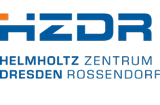Iterative image reconstruction
Tube of response High resolution OSEM Reconstruction (THOR)
A central task in iterative PET image reconstruction is adequate modeling of the system matrix and its efficient computation. System matrix modeling has a crucial influence on the resulting image quality. The elements of the system matrix describe the transformation between measured projection data and image space. They are defined by the geometrical probability that a photon pair emitted from a voxel is detected in a certain detector pair. Conventionally, this probability is considered to be proportional to the length of intersection between the corresponding line of response (LoR) and the voxel. This approach possesses relatively low computational costs and is suitable for on-the-fly calculation, where "on-the-fly" denotes the calculation of elements of the system matrix during the reconstruction process rather than pre-calculating and storing them on hard disk or, possibly, in memory. However, in its basic form this approach neglects the finite size of the detector crystals and other resolution degrading effects and thus does not provide a realistic model of the given physical system.
One of the ways to improve system modeling is to replace the length of intersection of an LoR by the volume of intersection of a tube of response (ToR) since this allows to take the finite detector size explicitly into account. We proposed a model for the on-the-fly volume of intersection system matrix calculation which was then integrated into an in-house implementation of a fully 3D list-mode reconstruction (Tube of response High resolution OSEM Reconstruction - THOR) based on the maximum-likelihood expectation-maximization algorithm. The reconstruction includes all necessary corrections for detector normalization and attenuation as well as random and scattered coincidences. THOR features flexible scanner support with Siemens ECAT HR+ and Philips Ingenuity TF PET/MR systems currently implemented. Utilization of THOR for reconstruction of the images from Philips Ingenuity PET/MR scanner allows to increase reconstructed images resolution to < 4 mm compared to ≈ 6 mm resolution when using the vendor's reconstruction.
References:- Lougovski et al., Phys. Med. Biology 60 (10), 2015
- Lougovski et al., Phys. Med. Biology 59 (3), 2014
Improved Scatter Correction
Utilization of Time-Of-Flight (TOF) information provides large benefits in terms of reduced image noise and improved convergence rate for PET image reconstruction. However, Scatter Correction (SC) becomes much more complicated compared to the non-TOF case. Existing TOF-SC algorithms are either much slower than their non-TOF counterparts or introduce noticeable reconstruction artifacts.
The accelerated TOF-SC algorithm proposed by our group demonstrates a similar scatter correction precision compared to well known TOF-Single Scatter Simulation (TOF-SSS) by Watson while performing 1.5 times faster in terms of overall reconstruction time. The newly proposed method does not cause any kind of halo artifacts under high contrast conditions which are clearly pronounced in vendor reconstruction.
References:MLAA-based Attenuation Correction
As is well known, quantitative combined PET/MR imaging depends on accurate MR-based attenuation correction (MRAC). While a mostly satisfactory state of affairs has been reached today, problems persist regarding segmentation errors including unsatisfactory bone identification and residual systematic differences in comparison to PET/CT. Alternative or complementary strategies for attenuation correction (AC), therefore, are of considerable relevance. In this context, Maximum Likelihood reconstruction of Attenuation and Activity (MLAA) is one of the most promising approaches.
The TOF version of the MLAA algorithm was implemented for the Philips Ingenuity-TF PET/MR scanner by incorporation into the THOR reconstruction tool. For evaluation, different brain and whole body studies were reconstructed. We could show that MLAA is capable to reconstruct skull and air cavities in head and lungs in whole body attenuation maps. Moreover, metal implants in one patient which caused severe artifacts in MR-derived attenuation maps were successfully identified by MLAA.
References:Translation into clinical application
Our future work will focus on evaluation of the suitability of THOR for routine use. For instance, the increased spatial resolution provided by THOR should improve small lesion detectability as well as contrast recovery (and, thus, accuracy of tracer uptake quantification). Our improved scatter correction algorithm has already proved to be capable of eliminating so-called "halo artifacts" which are frequently present otherwise under high contrast conditions. This is a crucial advantage, for example, in prostate cancer investigations with 68Ga-PSMA. Lesions in this case are typically located very close to the "hot" bladder where activity concentration can be over 200 times higher than that in surrounding tissues. Using the vendor's reconstruction for this application leads to severe quantification errors and can even cause lesions to disappear completely in the halo around the bladder. THOR does avoid these problems, potentially allowing more reliable evaluation of such investigations.

